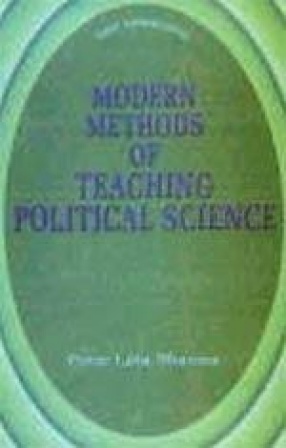A number of artistic trends, derived from the Arabo-Persian tradition, contributed to the richness of music in medieval India. The first volume of Nur-Ratnakar offers a compendium of sources on the early manifestations of this cross-cultural phenomenon, from the end of the tenth century to the end of the fourteenth, a key-period in the development of Indian music, especially court-music. Some of the important Arabic and Persian sources examined in the first volume of this ‘Bio-Biographical survey’ highlight diverse but complementary aspects of the art-music of India. Shahab Sarmadee’s selections from texts of various literary genres (such as musicological texts, historical chronicles, poetry and ornate prose, memoirs and other personal writings) document the history, theory and practice as well as the aesthetics of ‘music’, often in its traditional Indian definition, which includes dance and occasionally drama. Since music is considered a science and a branch of knowledge in the Arabo-Persian Civilization, classical treatises in Arabic stress the importance of the ‘musical and consonantal ratio’. Celebrated texts even when they do not refer to Indian music, provide deep insights into the mathematical structure of music in medieval India. Besides treatises in Arabic and Persian on the theory of music and historical chronicles highlighting the eminence of this art, important musicological treatises and poetical works relevant to music written in Sanskrit during the period under consideration are included in the survey. Knowledge of music was a prerequisite for a sophisticated ruler, hence the aristocratic patronage to music and musicians throughout the Islamic world. In India, from the Sultanate period onwards, many Indo-Islamic rulers encouraged music and dance, of both Persian and Indian origin, with a view to promoting the interaction between Persian and Indian culture. The main stay of the present study has been the documents which could be found to yield a somewhat connected account of how culture of this country “stood in relation to the social and political regimenmâ€; therefore how the combined arts of song, dance and drama progressed down the ages, and towards an inevitable synthesis and change.
Nur-Ratnakar (Volume I)
$49.99
$55.55
In stock
Free & Quick Delivery Worldwide
All orders amounting to US$ 50 or more qualify for Free Delivery Worldwide. For orders less than US$ 50, we offer Standard Delivery at $14 per book.
ABOUT THE AUTHOR Prem Lata Sharma
Dr. Prem Lata Sharma was Professor of Musicology, Banaras Hindu University (retired in 1987) and Vice-Chancellor, Indira Kala Sangeet Vishwavidyalaya, Khairagarh. She also published the critical editions of Rasavilasa (1972) and Eklingamahatmyam (1976).
ABOUT THE AUTHOR Shahab Sarmadee
Late Shahab Sarmadee (1914-94) graduated from the University of Allahabad, with vocal music as an optional subject (1934). He continued with the study of music at the Prayag Sangita Samiti, Allahabad, under the guidance of Pandit Kusalkar; he received traditional training in vocal music and tabla from Pandit Patwardhan, Ustad Yaqub Khan and Niloo Babu. In Lucknow he learned Thumri from Anath Nath Bose and Chottery Agha Sahib. He later worked for the All India Radio, Lucknow, as a Programme Producer. Thereafter, he was invited by the Centre of Advanced Study, Department of History at Aligarh Muslim University as a Visiting Fellow, under the stewardship of Prof. S. Nurul Hasan. He edited and annotated the fourteenth century anonymous text Ghunyat’ul Munya known to be one of the earliest works in Persian on Indian music (Aligarh and Bombay, 1978; English translation, forthcoming) and published a number of articles on various aspects of music mostly of the Sultanate period, while collecting and studying documents in Arabic, Persian, Sanskrit and other Indian languages on the subject of song, dance and drama, for his monumental bio-bibliographical survey, Nur-Ratnakar in two volumes. At the suggestion of late Prof. Prem Lata Sharma, he donated a number of research notes and documents used in the preparation of the Nur-Ratnakar to the Uttar Pradesh Sangeet Natak Academy, Lucknow. His critical edition and English translation of Nawab Saif Khan ‘Faqirullah’s Rag Darpan (1666) – a part of it being a Persian translation of Man-Kutuhal, a vernacular short treatise on music compiled under the patronage of Raja Man Singh Tomar of Gwalior (r. 1486-1516) – was published by the Indira Gandhi National Centre for the Arts and Motilal Banarsidass, New Delhi in 1996. Meanwhile his edition of Lahjat-I Sikandar Shahi written by Yahia al-Kabuli under the patronage of Sultan Sikandar Lodi (r. 1489-1517) was published by the Indian Council of Historical Research and Northern Book Centre, New Delhi, 1999. His Amir Khusrau’s Prose Writing on Music in Ijaz, introduced and translated into English is forthcoming (Calcutta Sangeet Research Academy). Driven by an insatiable kutuhal or intellectual and aesthetic curiosity, Shahab Sarmadee devoted his life to researching and studying original manuscripts and documents, with a particular sense of discrimination and awareness of the fine ligatures linking theoretical concepts and artistic practices from the Arab world to the Indian subcontinent, through Central Asia and Persia.
reviews
0 in total
Review by Anonymous
Be the first to review “Nur-Ratnakar (Volume I)” Cancel reply
You must be logged in to post a review.
Bibliographic information
Title
Nur-Ratnakar (Volume I)
Author
Edition
1st ed.
Publisher
ISBN
8185964157
Length
xxxvi+651p., Bibliography; Index; 23cm.
Subjects
more by Francoise 'Nalini' Delvoye see more
more by Prem Lata Sharma see more
Essays on Music
$52.20
$58.00
more by Shahab Sarmadee see more
Ghunyatu’l Munya: The Earliest Persian Work on Indian Classical Music
The present volume is a ...
$48.60
$54.00












There are no reviews yet.